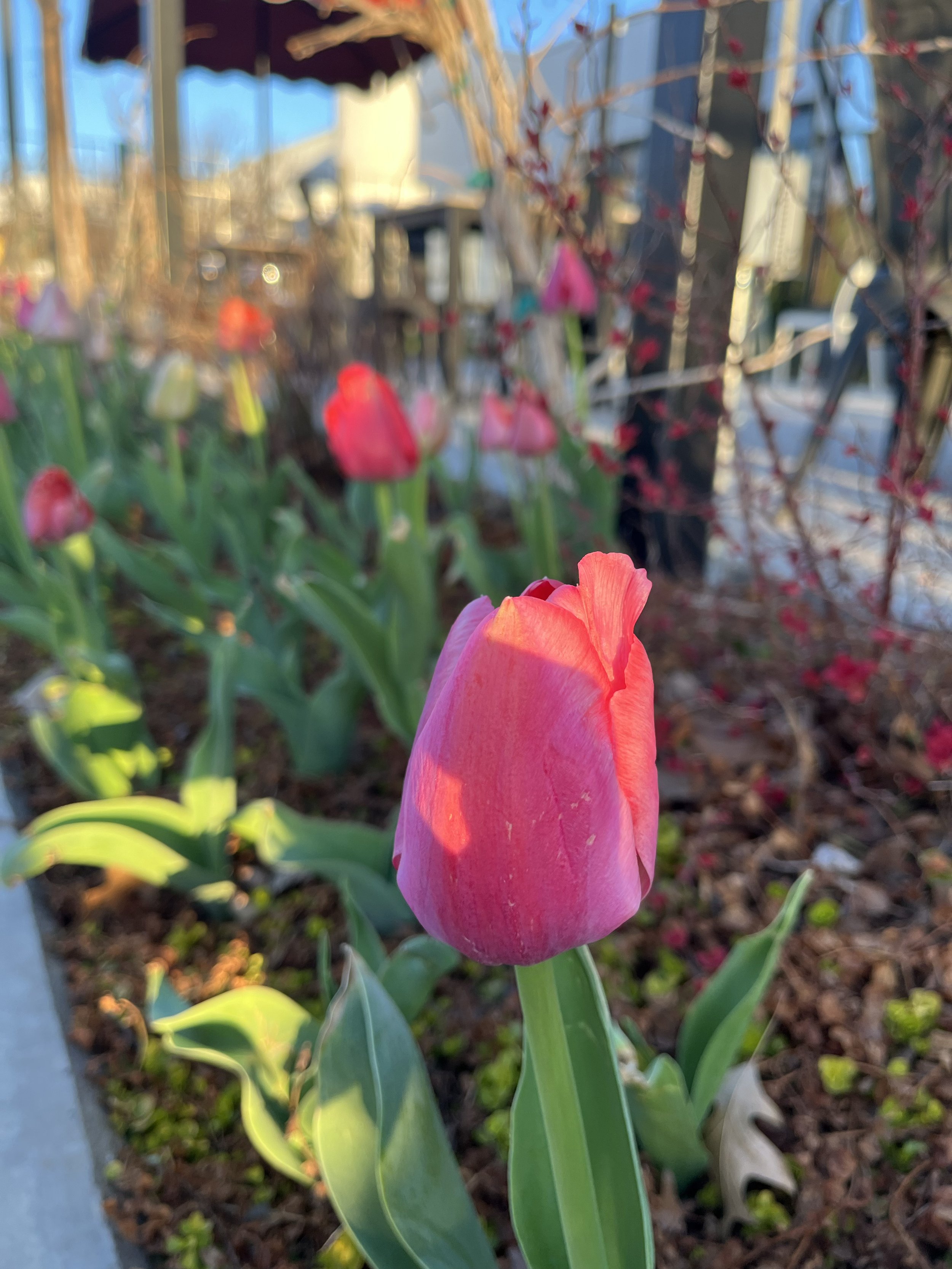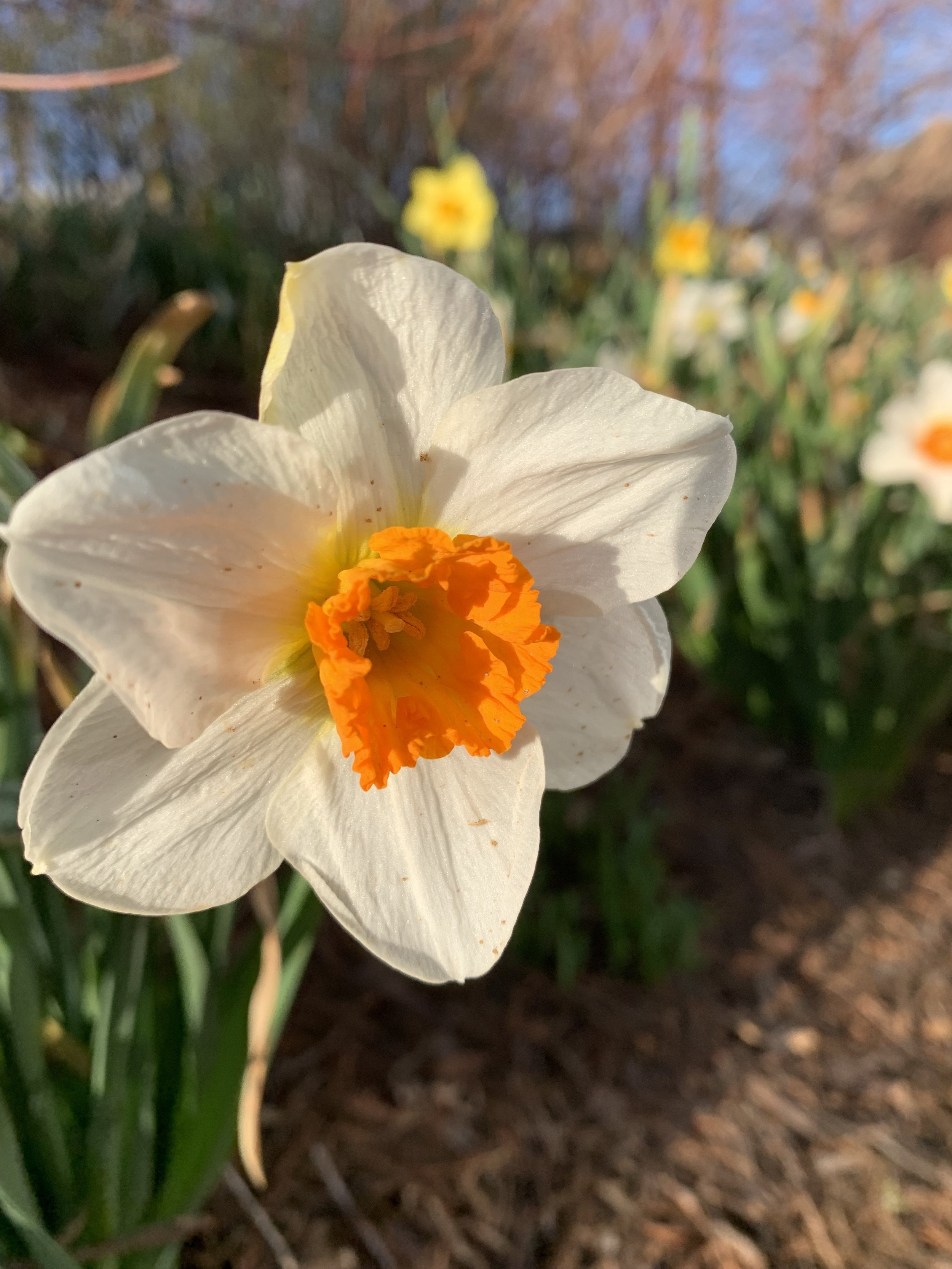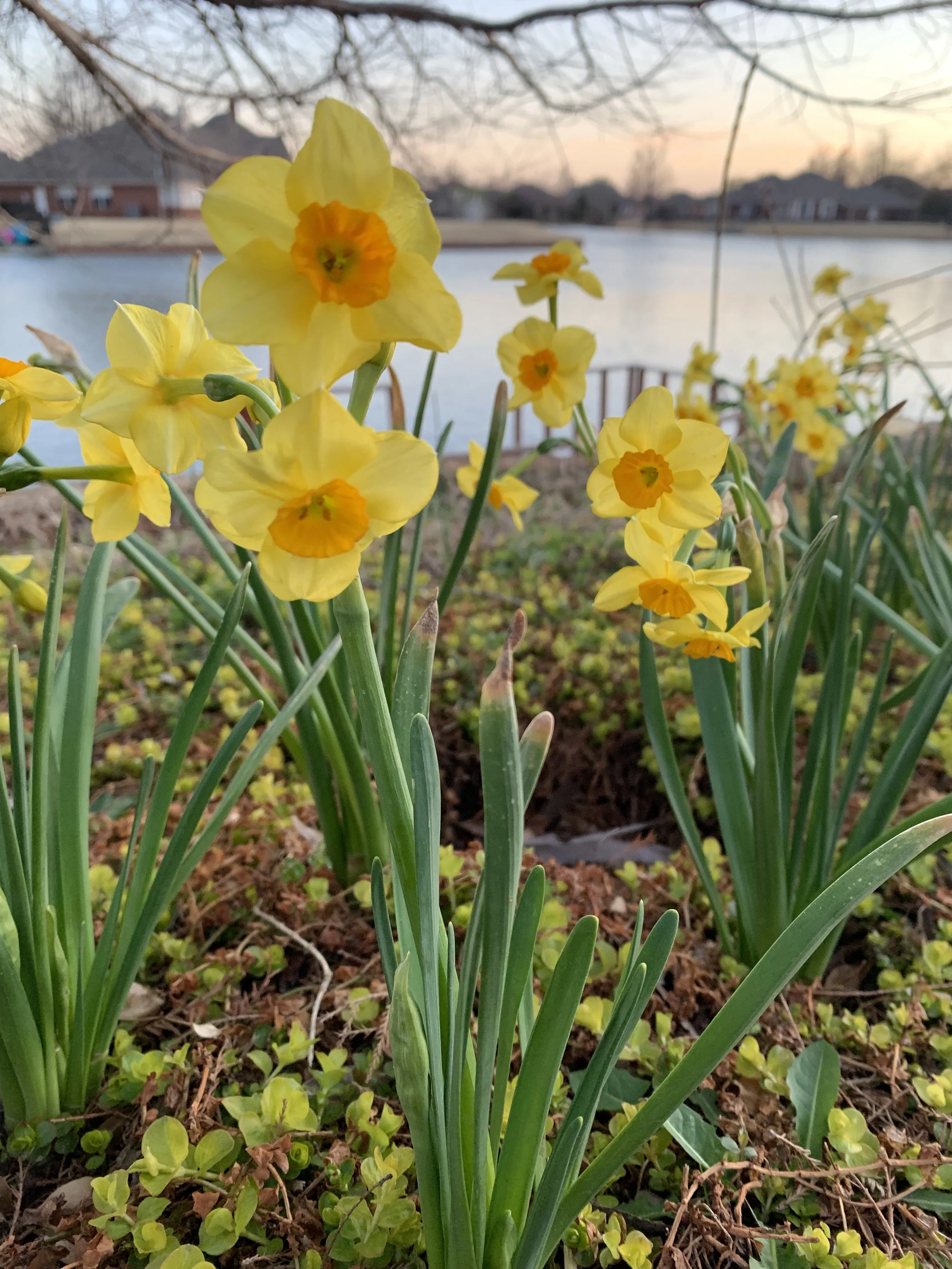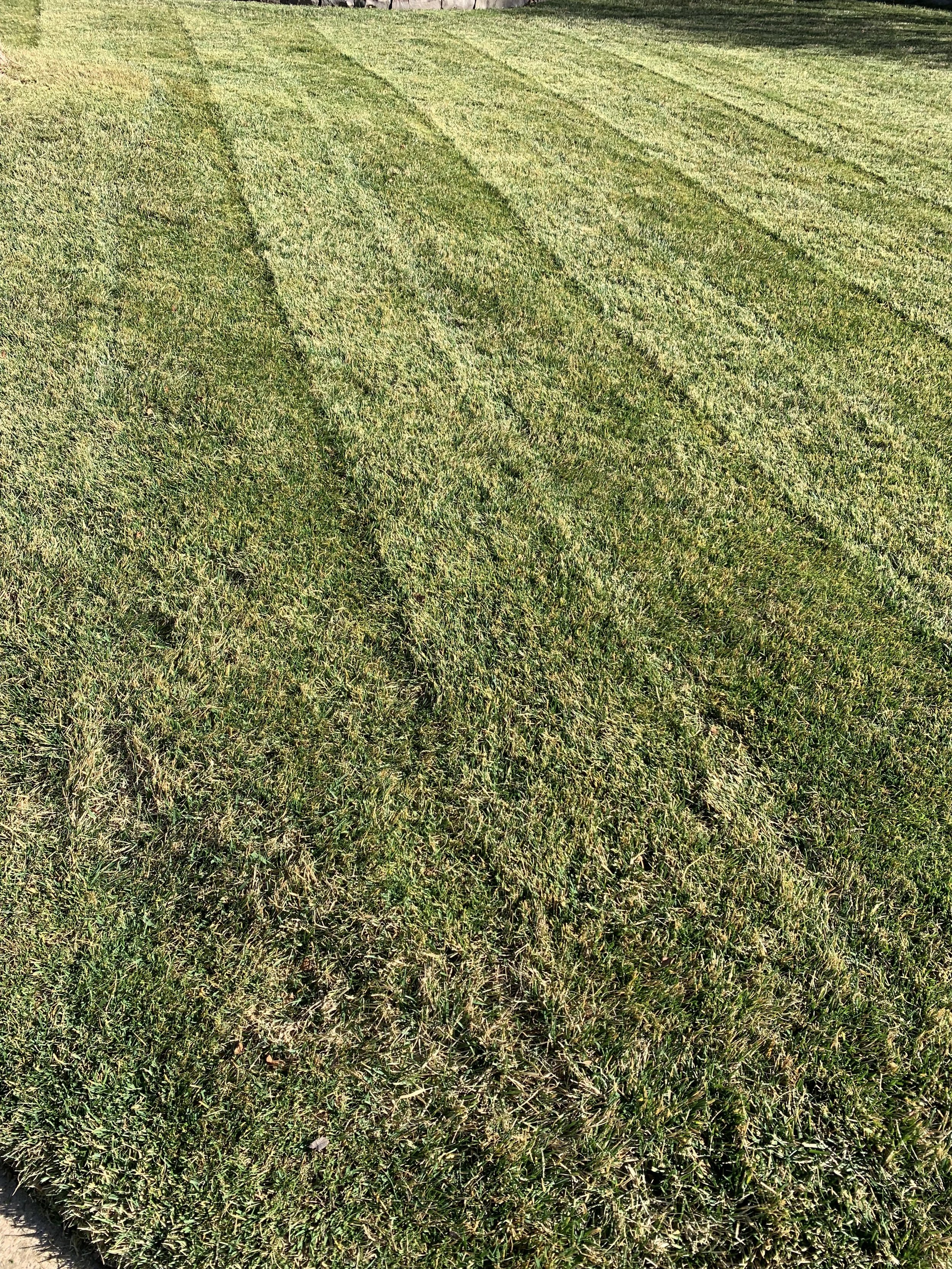March Lawn & Landscape Tips
March, the month our world awakens from its winter slumber!
March, the month our world bursts with color!
March, the month you just want to be outdoors in your lawn, in your landscape, and on your patio!
After a cold third week of February, the spring like weather this week has added a smile to faces and put a spring in our steps.
So, get outside. Enjoy every minute of every spring day. Spend some time in your lawn and landscape.
Here are a few lawn and landscape tasks you should tackle this month:
No two springs are a like. This picture is from February 24, 2024. And tulips were already adding color to the landscape. This year, after a very cold mid-February tulips are just starting to emerge from the soil.
Forsythia pictures from last spring!
If you haven't already, cut your fescue lawn to remove the freeze damaged leaf tips and soon the lawn will return to full color and start growing.
Spring Lawn Maintenance – Get the mower out and get it started. It is much easier to remove the winter damaged leaf blades before the turf begins to green-up. Remember, scalping on the lowest setting isn’t required and isn’t recommended. Simply mow the lawn at the height you plan to start the mowing season.
For most Bermuda lawns, the second setting is recommended. For fescue, start on the second or third notch on your mower.
We are often asked about dethatching at this time of year.
What is dethatching? Dethatching is the removal of excessive thatch that builds up on the soil surface by using a vertical power rake.
But, unless you have a thick layer of ½-1” or more of thatch, dethatching causes more damage to the crown of the plants than it does good. So, with only a few exceptions, the best method for reducing thatch is an initial spring lawn maintenance followed by aeration after spring green-up. Unnecessary dethatching and scalping the lawn too low removes the canopy opening the lawn up to disease and weeds.
Need more info on the first mowing of the season? Check out last week’s post!
Lawn Maintenance – As soil temperatures climb and occasional spring rains return, as soon as you remove the winter damaged leaf tips from your fescue lawns, they will regain color and start growing. Start your cool season lawn off right by maintaining it at 2 ½ - 3”. When it starts growing, mow frequently enough that you are never removing more than 1/3 of the leaf blade per cutting. So, if you plan to maintain a 3” level, don’t allow the lawn to grow past 4.5” without giving it a trim.
If you have warm season turf, bermuda or zoysia, after you cut the lawn for the first time to remove the brown winter damaged leaf blades, most likely you can put off regularly scheduled lawn mowing until April.
Saucer Magnolia is a small deciduous tree with saucer-shaped white, pink or purple blooms in early spring. It makes a great specimen tree from the spectacular spring blooms to its spreading, multi-trucked shape.
Tulips from last spring.
Saucer Magnolia is a spring favorite.
Headed to Dallas in the next few weeks? Add the Dallas Arboretum to your places to visit during their spring Dallas Blooms event, now through April 8th.
One of the first shrubs to announce spring is forsythia. Interesting tidbit: when forsythia starts blooming it is an indicator that crabgrass has started germinating.
Lawn Weed Control – Summer annual weeds begin germinating when soil temperatures consistently reach 55 degrees. With the above normal temperatures over the past week, soil temperatures have quickly climbed into the upper 40s to low 50s. Unless we have another cold spell, we are on course to see soil temperatures consistently reach 55 degrees by mid-March.
If you have not applied the first spring pre-emergent yet, please do so as quickly as possible. Whether you apply a pre-emergent yourself, or we do it for you, always follow instructions. Watering is a required step to move the herbicide into the top ½” of soil.
Want to know what crabgrass will do to your lawn this summer if you don’t apply a pre-emergent?
This is the month landscapes are filled with the bright pinkish-red colors of Redbuds, the Oklahoma State tree
Bed Weed Control – March is an excellent month to apply a plant safe pre-emergent to your landscape plantings. Use caution in selecting the product to make sure it is safe for your plants. When possible, select a granular pre-emergent mixed with a fertilizer containing approximately 20% nitrogen. Doing so will give your plants a good spring feeding while preventing weeds at the same time.
Lawn Fertilization – This month is a good time to start fertilizing your cool season lawns. Use a fertilizer with 25-30% nitrogen. Cool season lawns need to be fed more in the spring and fall when they are actively growing, and less in the summer.
If you have a warm season lawn, wait until lawns begin greening up to apply the first fertilizer application.
Tree & Shrub Care - If you struggled with aphids, mites or scale in the past year you still have time to apply a dormant oil application for another couple of weeks. Dormant oils work by suffocating, smothering overwintering insects. Oil blocks the air holes causing the insect to suffocate. Dormant oils are an eco-friendlier approach to insect control by reducing the need for harsher control methods later.
Spring is also a good time to fertilize trees and shrubs with slow-release nitrogen, high quality phosphorus and potassium as well as micronutrients to provide consistent, extended feeding. This formulation is ideal for improving tree and ornamental development and vigor without unwanted shoot growth. March is also a good time to apply systemic insecticide to control sucking and chewing insects.
Hyacinth is one of the first spring blooming bulbs to add splashes of color to the landscape.
Not all the colors of spring are blooms. Be on the watch for the bright colors of new leaves such as the yellow, oranges and reds of Goldmound Spirea.
Mulch – Spring is a great time to mulch your landscape plantings. Maintaining a 2” layer of organic mulch will reduce weed population, retain soil moisture, and provide a more consistent soil temperature for plant roots. I find adding mulch an easier task in the spring when I am cleaning my landscape plantings for the first time.
Irrigation – It is always important to monitor rainfall and water based on need. January and February, typically our driest months, have once again lived up to expectations this year. It has been over 50 days since we last received a ¼” of rainfall. Until there is a good rainfall, give your lawn and landscape a good soaking every 4 to 7 days. As temperatures warm up, gradually increase the frequency of watering but delay watering every other day until late spring to early summer. Always delay watering for a few days when we receive a ¼” rainfall or more. You will save both water and money if you always water on an as needed basis.
Flowering Quince with bright orange to red flowers is one of the first shrubs to declare spring.
Spring Seasonal Color – Pansies are the toughest winter annual color, but it is common for them to look a little freeze burned after the winter. As long as the crown of the plant is not damaged, they will return to life and bloom this spring. The great thing about pansies is they add color to the landscape until it is warm enough to plant summer annuals.
Wait until April to plant impatient, begonia, geranium, etc. And remember, most summer annuals need the warmer soil temperatures of late April or May before they are planted. If you get in a hurry, you will end up planting your summer annual color twice. When planting, remember most plants prefer well drained, organic soil and would prefer you add compost when planting.
Seeding Fescue – March is the second-best time to overseed fescue. But, it comes in a very distant second to seeding in the fall. Spring seeded fescue will come up very well and look very good till the summer heat arrives - then it fades quickly. Fescue, being a cool season grass, will not establish a sustainable root system when planted in the spring. Give your fescue lawn a chance to green up first to get a better feel on the overall condition of the lawn. If you still feel you have bare areas that need to be addressed now, seed this month but still plan on seeding again in the fall. In most cases waiting till fall to seed is best. Fall seeding allows you to focus on weed prevention and turf development in the spring and turf establishment in the fall when it is best.
Bridal Wreath Spirea will add graceful white blooms toward the end of March.
Creeping Phlox is one of the first perennials to announce spring has arrived.
Pruning – March is the time to do heavy pruning on your roses. March is also the best time to make a major reduction in the size of hollies, boxwoods and most broadleaf evergreens. Before spring growth arrives, you can successfully remove all the foliage back to the central leader if needed.
Need more information on spring pruning?
If you need help with any of your lawn and landscape tasks, or just have a few questions, please don’t hesitate to give us a call or send us an email.
Lorne Hall
Hall | Stewart Lawn + Landscape
(405)367-3873


















